#Brave raideen
Text

RAIDEEN the BRAVE! 勇者ライディーン
Co-created by Gundam creator Yodhiyuki Tomino, Raideen is an giant ancient robot guardian, created by the the people of the lost continent of Mu! Piloted by teenager Akira Hibiki, he must use Raideen to defend mankind from The Mu’s ancient enemies: the evil Demon Empire and it’s dark god: Baraos!
For years, I only knew about this robot from random toys and the covers of Marvel’s Shogun Warriors comic, but was truly surprised by its unique and grand original story!
#my art#artists on tumblr#art#procreate app#fan art#fan art friday#raideen#brave raideen#Raideen the Brave#super robots#Japanese super robots#old school anime#70s anime#giant robots#robot#mecha#lost continent of mu#yoshiyuki tomino#character redesign
21 notes
·
View notes
Text
An Abbreviated History of Mecha Part 2: AWAKEN! SUPER ROBOT!!! (1970-1979)

(Read in the voice of Tessho Genda) ITS NAME IS.... MAZINGER.... Z!!!!!!!!!
Welcome back to An Abbreviated History of Mecha. Last time, we covered the origins of mecha by highlighting some of the major works of the time including Godzilla and Ultraman, which are not really mecha but are just as influential to the genre as the other shows mentioned.
Today, we will be moving on to the 70's. Here we will see three extremely iconic entries to the canon make their grand entrances, known to Super Robot Wars fans as the Holy Trinity. We'll also see a lot of the classic mecha tropes become codified with a lot of these entries. So, let's MAZIIIN GO!
Kamen Rider (1971)

Kamen Rider is the second iconic series created by mangaka Shotaro Ishinomori and would be part of the reason why henshin heroes (that is, heroes who transform) would become so popular. More importantly, Kamen Rider would give us one of the most homaged attacks of all time: the Rider Kick! And in case you're wondering, yes, Ishinomori still has one more series worth mentioning.
Kamen Rider, alongside Godzilla and Ultraman, got a 2023 retelling in the form of Shin Kamen Rider, courtesy of Hideaki Anno.
Mazinger Z (1973)

Mazinger Z is one of the many iconic series created by legendary mangaka Go Nagai. If Tetsujin 28 was the original "super robot", Mazinger Z would be the series that would introduce a lot of the tropes now commonly associated with a lot of giant robot anime, including but not limited to:
A robot that has to be piloted from the inside
A chest blaster
Laser eyes
Hot-blooded pilots
The term "super robot"
And most important of all, the rocket punch
Let's just say that there's a good reason why Mazinger Z (and this is just Mazinger Z) is the first of the three pillars of the Holy Trinity. Mazinger also has, in terms of sequels and adaptations:
Great Mazinger
UFO Robot Grendizer
Mazinkaiser
Shin Mazinger Z/Mazinger Edition Z: The Impact
Mazinger Z Infinity
Getter Robo (1974)
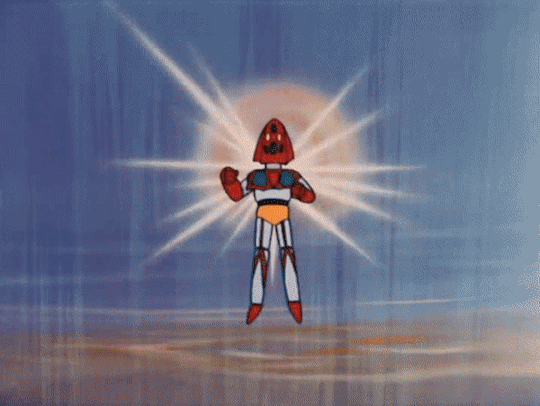
Created by Ken Ishikawa with help from Go Nagai, Getter Robo would be the second pillar of the Holy Trinity alongside Mazinger Z. Getter Robo would be important for introducing concepts such as a robot piloted by multiple people and, more importantly, Getter Robo would also introduce us to the combining robot, which is why it requires multiple pilots to man.
Getter Robo would get multiple sequels and spinoffs including, but not limited to:
Getter Robo G
Getter Robo Go
Shin Getter Robo Armageddon!
Shin Getter Robo vs Getter Robo Go
New Getter Robo (not to be confused with Shin Getter Robo)
Getter Robo Devolution
Eventually Ken Ishikawa would pass away before he could wrap up the series with Getter Robo Arc. I will come back to Getter Robo at some point in this series though, but to give you a hint: the series does get a conclusion.
I think I'd also be mistaken not to link to Cheese GX's excellent video retrospective on Getter Robo.
Super Sentai (1975)

Because Shotaro Ishinomori wasn't content with creating two iconic series, he went ahead and made a third: Super Sentai. That's right: Ishinomori created the two most iconic versions of the henshin hero. Super Sentai is worth mentioning here due to the fact that the series would eventually start adding giant robots into the mix. This series would also eventually attract the attention of one Haim Saban, but that's a story for another day.
Microman/Microbots (1974)
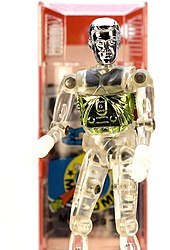
Microman (the toy, not the wrestler) was a line of, and I'm not joking when I say this, "Tiny Little Guys" released in 1975 by the toy company Takara. I'm not super familiar with Microman, but I feel it is important to mention Microman here to understand that one of the biggest names in mecha is descended from this line of toys, as it would start out as a spinoff of microman. Something about transforming vehicles the micromen could pilot. Who could know?
Also fun fact, there's a wrestler named Microman.
Brave Raideen (1975)

(We'll have to settle with this clip from Super Robot Wars)
Brave Raideen is a series created by Studio Sunrise and is one of the first giant robots that is considered to be supernatural in origin. Raideen is important in the history of mecha as it is where two important figures would come into play: Yoshiyuki Tomino and Tadao Nagahama. While it is largely overshadowed by other bigger series, Raideen is still important due to it being the first stepping stone for those two directors alone.
Space Battleship Yamato/Star Blazers (1975)

Up next is Leiji Matsumoto's legendary Space Battleship Yamato. This series would be one of those watershed moments in anime history as Yamato would prove that there was, in fact, an audience who wanted more serious war stories. To say that this series isn't that influential would be a mistake, as we will soon see.
Space Battleship Yamato would eventually receive multiple adaptations, including a live-action film and an anime reboot in the new millennium. The success of Yamato would also help pave the way for other Leiji Matsumoto works like Space Pirate Captain Harlock and the Galaxy Railway 999.
The Robot Romance Trilogy (1976-1979)

(Pictured above: Voltes V)
The Robot Romance Trilogy is a thematic trilogy created by Toei and directed by Tadao Nagahama. These series would include:
Super Electromagnetic Robot Combattler V (V as in the letter)
Super Electromagnetic Robot Voltes V (V as in the number)
Fighting General Daimos
The Robot Romance Trilogy is known for building off of the innovations of its peers. Whereas Getter Robo combined by smashing three jets together (and thus was hard to translate into a toy), Combattler V was designed in a way where the parts of the robots actually made sense when combining to form the robot. This also doesn't even touch on the fact this trilogy would also help to popularize things like the five man band (alongside Super Sentai), mecha shows having more serious storylines with melodrama, and funnily enough, the motion capture mecha (specifically Daimos).
Voltes V is also extremely popular in the Philippines. While this isn't unheard of at this time, Voltes V was different in that it was banned from airing on television by the Marcos regime. Speculation behind its ban may be that its themes were similar to the plight of the Filipino people under Marcos, so you could say that Voltes V in particular is a symbol of rebellion in the Philippines. Heck, it was so popular that there now exists a live action Voltes V series filmed in the Philippines.
Zambot 3 & Daitarn 3 (1977 & 1978)

(Pictured above: Zambot 3)
Meanwhile, Yoshiyuki Tomino would continue to push boundaries as he got more into the groove of directing. On top of producing Voltes V (according to Wikipedia), Tomino would work on a few more series before the end of this decade. The first two would help to establish a pattern with Tomino's works, where he would follow up a more serious and depressing series with something more lighthearted and silly. Zambot 3 would help Tomino earn his nickname "Kill 'Em All Tomino," while Daitarn 3 would also show that he knew how to relax when working on a series. Both Zambot 3 and Daitarn 3 were big hits, but the next series would forever cement Tomino as a legendary figure in the world of anime and manga.
Mobile Suit Gundam (1979)

Mobile Suit Gundam, the final pillar of the Holy Trinity, is arguably Yoshiyuki Tomino and Sunrise's single most important series date. Arguably the single most famous mecha of all time, Gundam would be the first giant robot to be treated less as a hero and more as a tool of war, and it would be Gundam who would kick off a new generation of mecha stories that focused more on things like war and how it affects the lives of the characters in these stories. Which is funny, because Gundam was initially a flop at first. Over time, the series would eventually become a hit thanks to its compilation movies as well as the sale of its models and, most important of all, its female fans.
Mobile Suit Gundam would also be a watershed moment in animation history, as it would be the introduction to a lot of people who would also become famous thanks in part to this series. This includes people who worked on the show like Yasuhiko Yoshikazu (the character designer), Kunio Okawara (mechanical designer, and arguably the first credited mechanical designer), and Ichiro Itano (animator, the same man who Itano Circus is named after). Gundam would also be a direct inspiration for one Ryousuke Takahashi, who would begin to really push the boundary for what one could do with military mecha shows.
Conclusion
I hope this was an enjoyable read. Next time, we'll be getting into the 80's, where we will begin to see a lot of series pop up as Japan's economy grows at an exponential rate. We'll also see how these giant machines will come to influence people outside of Japan on top of how they build off of the themes present in the first Gundam.
Will you survive?
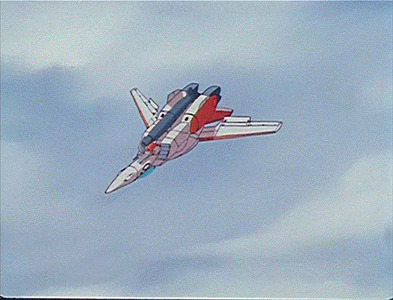
#anime and manga#mecha#an abbreviated history of mecha#mazinger z#getter robo#robot romance trilogy#combattler v#brave raideen#zambot 3#daitarn 3#voltes v#daimos#space battleship yamato#mobile suit gundam#kamen rider#super sentai#microbots#microman#the toy not the wrestler
17 notes
·
View notes
Text
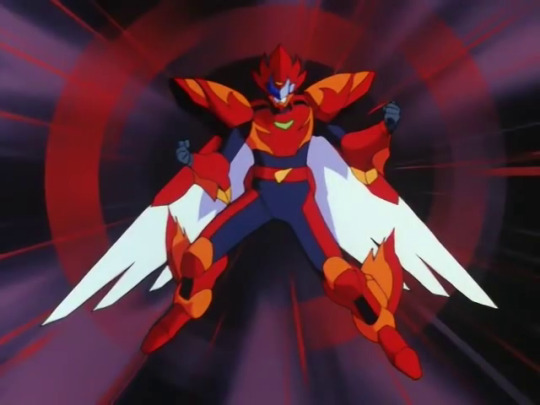
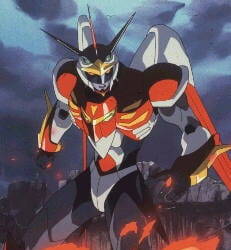
Guys....I think these two should be best friend and pretty epic crossover idea
#Like seriously I can't find fanart/talk about Raideen Chouja/Raideen the superior#I WANTED TO SEE MORE CHOUJA RAIDEEN#Chouja Raideen#Raideen the superior#Brave Dagwon#brave command dagwon#Brave series#yuusha series#Raideen#Yuusha raideen#Brave raideen#The crossover we need#Firebird duo :333#Henshin hero
9 notes
·
View notes
Text
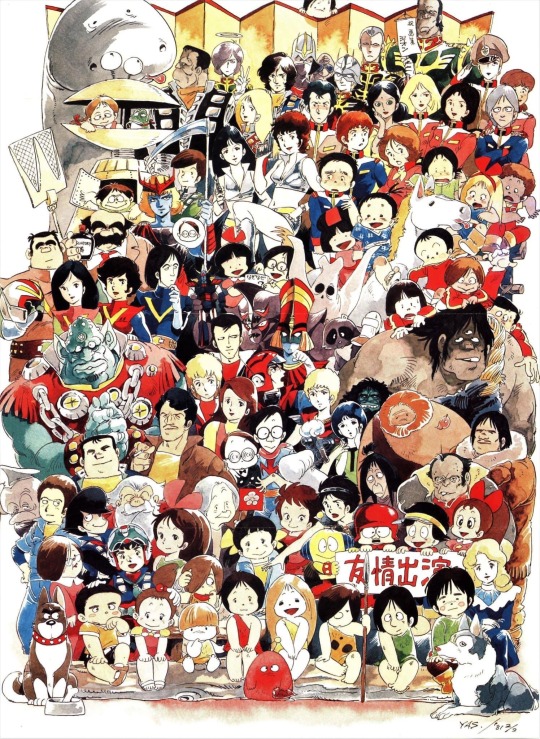
Various characters designed by Yoshikazu Yasuhiko
#yoshikazu yasuhiko#mobile suit gundam#arion#crusher joe#dirty pair#combattler v#zambot 3#wanpaku omukashi kumu kumu#kum-kum#shiroi kiba white fang monogatari#white fang#brave raideen
43 notes
·
View notes
Photo

Cover of Shogun Warriors, issue 1, Marvel Comics, February 1979
7 notes
·
View notes
Text
I truly love when new fans get into mecha, and I go out of my way to introduce it to friends who I think would like the genre. I want new fans of the genre to feel welcome, because gatekeeping has never helped a soul.
However, it really doesn’t sit right with me how pretty much every time a mech show gets popular in the mainstream, people proceed to use it to denigrate the rest of the genre. It can’t be a good mecha, it has to be good in spite of being a mecha.
From Neon Genesis Evangelion to Gundam: The Witch from Mercury, these works are often divorced from the genre that made them. Every other discussion of Evangelion brings up what it pulled from psychology, from religion, but rarely is it ever mentioned how much influence it took from Brave Raideen and the rest of Yoshiyuki Tomino’s works.
It just bugs me.
#hamburger.txt#this isn’t a big problem of course#it just bugs me#it reminds me a lot of how horror is treated
11 notes
·
View notes
Text
Complete Works of Yoshiyuki Tomino - Yasuhiko Yoshikazu Interview Excerpt
Book Released 1999
Mr. Yasuhiko is an indispensable member of the "Mobile Suit Gundam" staff, and he is also an integral part of early Tomino works such as "Raideen the Brave" and "Invincible Super Man Zambot 3".
We interviewed Mr. Yasuhiko, who has since moved his activities to the manga world, about his work with Mr. Tomino.
The Wandering Storyboard Man
--Mr. Yasuhiko, you joined Mushi Productions in 1970, and the first work you were involved in was The Wandering Sun. Were you aware that Mr. Tomino worked as an (enshutsu) director on that show?
Yasuhiko: Yes, I was aware. At that time, he was famous in the industry for showing up here and there and drawing many storyboards.
--He was famous in the industry?
Yasuhiko: He was fast at drawing storyboards. I also considered myself on the faster side, but there used to be a saying, "If you ask Tomino to make a storyboard, he will finish it in three days.” People like that were very precious in the industry, so everyone asked him to do it.
--You were involved in the production of Raideen the Brave from the planning stage, weren't you? Did Mr. Tomino participate as a staff member at that time?
Yasuhiko: He was not present during the planning stage. When we actually started the series, we had to decide who to ask to be the CD (chief director), and there were a lot of different ideas, but in the end, I heard that Tomino was chosen. When I heard the news, I thought, “Oh, /that/ Tomino-san?” and found it unexpected.
--Did Mr. Yasuhiko move directly from Mushi Productions to Soeisha (early Sunrise)?
Yasuhiko: I was not affiliated with Soeisha, but I went there as a freelancer to get work.
--So when you went to Soeisha, did you find Mr. Tomino there as well?
Yasuhiko: He also wasn’t affiliated with anyone at the time, a wandering storyboard artist (laughs), so it was like, "Oh, so he's working here, too.”
--What was Soeisha like at that time? I believe that the company had just been established and was making films such as Zero Tester.
Yasuhiko: Zero Tester was our second work. When I went to work at that time, I found that Mr. Tomino was an episode director on that show as well.
--At that time, there was Toei Doga, Tatsunoko Productions, Tezuka Productions, Nishizaki Productions, and so on. Being among those names, did the works produced by Soeisha receive any attention?
Yasuhiko: No, not at all. It was a company that would’ve fallen apart with the lightest of touches. We hadn’t produced anything good yet, so it was natural that we did not attract attention.
--When was Mr. Tomino chosen to direct Raideen?
Yasuhiko: I don't know. I think it was at the very last minute when we were about to start making the series. It was so long ago that I don't remember much about it.
--From Mr. Yasuhiko’s point of view, what kind of person was Mr. Tomino at the time?
Yasuhiko: He was a very unserious person. The nickname, 'Wandering Storyboard Man' also had a light nuance, implying that he’s that one guy who is just kind of there wherever you go. So when it was decided that Mr. Tomino would be the director of Raideen, to put it bluntly, my first thoughts were “Mr. Tomino? That shallow guy?” At that time, I didn't know about Triton of the Sea, so I wasn’t aware that he had a few interesting works under his belt. I didn't even know he had worked as a director before. It's a bad way to put it, but I had an image of someone who scattered storyboards everywhere. A fast drawer.
--When you say “scattered”, how would you rate his work in terms of quality?
Yasuhiko: It was not high by any means.
--So you would say he only does work to a certain standard.
Yasuhiko: I mean, his storyboards are pretty silly. There are a lot of people who draw more simple storyboards. Their storyboards are not bad, but rather, just okay. His storyboards are not like that, but more like, "Are you being serious!?” But they were fast. Because people who work fast were treasured, many places asked for him. However, Mr. Tomino's storyboards were not well received by animators. There were a lot of cuts that made you say, "Are you kidding me? What was he thinking?!”
--In the sense that it would be hard to animate?
Yasuhiko: Yes, they make you wonder, "Why do I have to make all these cuts?” I think the situation is still the same today, but a TV series is made with a cheap budget of about 3,000 frames for 20 minutes or so. That 3,000 is after taking into account the minimum number of movements that are absolutely necessary for the story to make sense. If you do anything extra, you will soon end up with 4,000 or 5,000 frames.
Under such circumstances, Mr. Tomino's storyboards are full of unnecessary details. This made his storyboards very difficult to accept. For example, when the main character is performing something in the center of the screen, there are passersby in the background who are doing something unrelated to the main character. When I see that, I get angry. Do you know how many extra pages it costs me to do something like that? During drawing meetings, I would often remove them and say, "No one will notice that detail.” If Mr. Tomino hears about this, he might get angry though.
--Mr. Tomino graduated from the Nihon University College of Art as a film major. Was that kind of film orientation, or rather, the live-action orientation and the anime industry at the time incompatible?
Yasuhiko: It's incompatible, isn't it? Thinking back on it now, I really believe so. They were drawing storyboards that were not limited animation style. Such people draw storyboards that are elaborate in a good sense, but if they get too overly elaborate, they are shunned. They work too slowly, and the story becomes tedious. But with Mr. Tomino, he is light, so people don't really turn away from him. He can complete a storyboard in three days, no matter how much he elaborates or plays around with it. And the parts that make you go, “what the heck is this?” we would simply cut out later. Even so, he never complains. That's the kind of person he is. So it wasn't just me. I think there were many people who looked at him and said, "Tomino? Oh, that unserious director.”
The enthusiasm from the lovely dovey wife bento box!
--At the time of Raideen, you were working with C.D. Tomino as an animation director, but were the storyboards drawn there different from the storyboards he drew before that?
Yasuhiko: Storyboard quality was the same.
--In terms of directing?
Yasuhiko: To be frank, at first I thought, "What the heck, Tomino again?” However, I probably should talk about this, but he came to work with a magnificent bento box. I wonder if they still exist today, but it was a warmed-in-the-pot type bento, essentially what we call an "aisai-bento" (lunch box from a loving wife). At that time, we were at a point in our lives where we were content to eat whatever as long as we could fill our bellies. Of course, it was a show of his wife's support, but I also felt he was very enthusiastic about his work. Seeing his lunch box. It's a strange story (laughs). I had thought he was just unserious, but at that moment I thought his enthusiasm was quite unusual. He was very motivated, and even though he came in later, he was very proactive, saying, "I'm going to make this in my own color," and suggesting we do this and that.
7 notes
·
View notes
Text
Oh looks like the Akira Kamiya rumors for Super Robot Wars are indeed false now that Brave Raideen is back.

4 notes
·
View notes
Text
I made a stream-affiliated discord. My current goal with it is "get enough people to do watch parties of old mecha shows," since i can't do that on twitch. So even if you don't give a shit about my gamer streams, feel free to pull up for Brave Raideen or Gundam or whatever.
0 notes
Photo

$15.5 ~ Vintage Popy Brave Raideen Chogokin Raideen, Toy Robot Collection, Toy Metal Robots, Antique Robot Toys, Vintage Tin Robots, Retro Robot Toys, Collectable Robots, Retro Tin Robots, Vintage Robot Toys Find Out This Toy Robot Collection
#ToyRobotCollection#ToyMetalRobots#AntiqueRobotToys#VintageTinRobots#RetroRobotToys#CollectableRobots#RetroTinRobots#VintageRobotToys
0 notes
Video
youtube
RahXephon was ostensibly influenced by the 1975 anime Brave Raideen. But if you've seen Neon Genesis Evangelion, and then this show, you cannot (and I did not) avoid comparing the two. It frankly baffles me that some people see this as a better show than Evangelion, though, because it's not actually about anything. What are the actual themes of RahXephon? Aside from playing lip service to music/sound as a reoccurring element, there's not a whole lot to the show. It's decent, but not transcendent the way Evangelion is.
0 notes
Photo



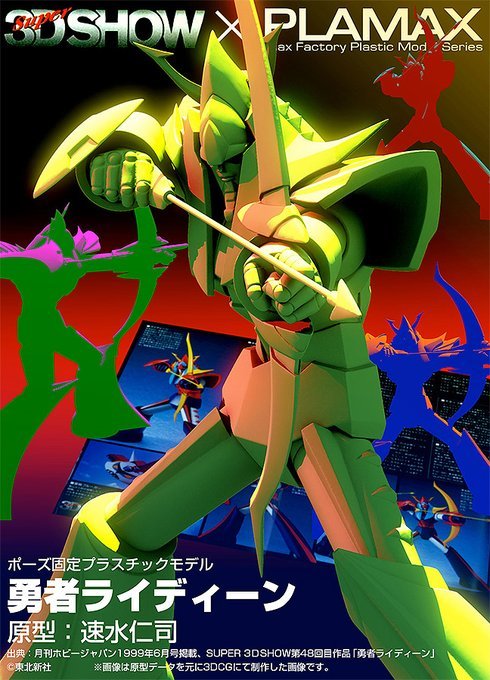



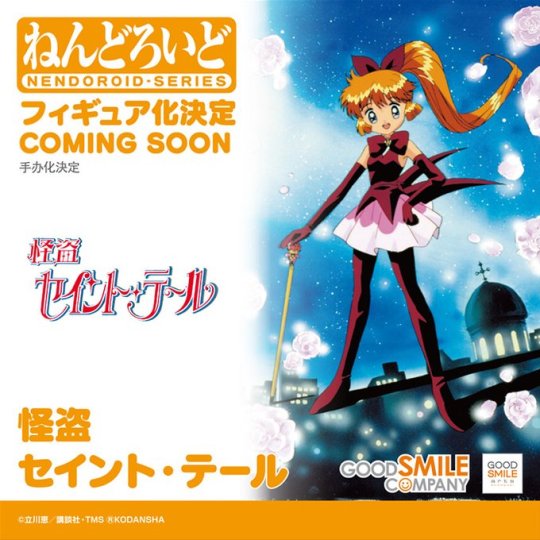
News - During Good Smile Company’s recent Smile Fest, they announced some new figures coming out from some older anime! Pop Up Parade figures of Cobra and Lady from Space Adventure Cobra, a Figuma of Guyver, a Playmax model kit of Brave Raideen, Nendoroids of Kurama, Hiei, and Kuwabara from Yu Yu Hakusho, and a Nendoroid of Saint Tail herself! No release dates or pricing info on these yet, since these were just announced. You can see the full gallery of every announcement from the event on their English website here!
#news#anime figures#anime merch#space adventure cobra#the guyver#bio booster armor guyver#brave raideen#yu yu hakusho#kaitou saint tail#saint tail#smile fest 2022#good smile company#80s anime#90s anime#links out
24 notes
·
View notes
Text
G Gundam Prelude: The Real Robot vs Super Robot Debate

So before I begin talking about Mobile Fighter G Gundam, I'd like to take a minute to preface that conversation with a companion piece of sorts. This involves the nature of how the mecha "genre" of anime is divided into two subgenres, and how this subdivision (*synth and bass solo play at the same time*) is often used as a sort of dick-measuring contest by fans to argue that their preferred genre is better than the other.
Tetsujin 28-go, Mazinger Z, and the "Super Robot"

To understand the two sub-genres, we first need to understand the general history of the mecha. Technically speaking, our story really starts with Osamu Tezuka's Mighty Atom (Astro Boy in the west), but the giant robot style of mecha would not appear in earnest until Mitsuteru Yokoyama's Tetsujin 28-go (Gigantor in the west) and Go Nagai's Mazinger Z. Tetsujin and Mazinger would go on to codify a lot of the tropes common to a lot of these early robot series alone. If it wasn't either of those two, chances are likely Ken Ishikawa's Getter Robo will have you covered.

These so-called "Super Robots" were known for their superhero-like power sets. They were usually powered by either nuclear power or a fictional power source such as Photon Energy or Getter Rays. Almost every single robot in these stories were made with some sort of Super Alloy (or Chogokin), and each super robot had a whole arsenal of weapons, including but not limited to swords, axes, drills, lasers, and, of course, the rocket punch. These super robot series would dominate a lot of Japanese television for most of the 70's. But behind the scenes, one man would be forging his own path. And at the end of the decade, he would release a show that would turn the canon of mecha stories on its head.
Gundam, VOTOMs, and the "Real Robot"

In 1979, the anime series Mobile Suit Gundam would air on Japanese television for the first time. This is one of the many mecha series directed by anime legend Yoshiyuki Tomino, and follows a direct lineage from his other works such as Brave Raideen, Zambot 3, and Daitarn 3. Gundam, however, would herald a new style of mecha stories thanks in part to it ditching a lot of the more fantastical elements of its "super robot" forebears in favor of a more grounded war story. These would be the so-called "real robot" style of mecha stories, and would further be codified by Ryousuke Takahashi's first two series, Fang of the Sun Dougram and Armored Trooper VOTOMs.

The "real robots" were a hard departure from their super robot brethren in that they were grounded in reality. Gone were the super alloys and the fantastical weapons, which were now replaced with weapons similar to that of a modern military. More importantly, the stories were now about wars, not with aliens as the antagonist, but other people. Humans. These stories would dominate a lot of the 80's, though the more traditional robots of the 70's would still be around as well.
There's just one problem with the term "Real Robot." The realism doesn't come from the machines themselves.
The Realism of Really Real Robots (It's Not What You Think It Is)
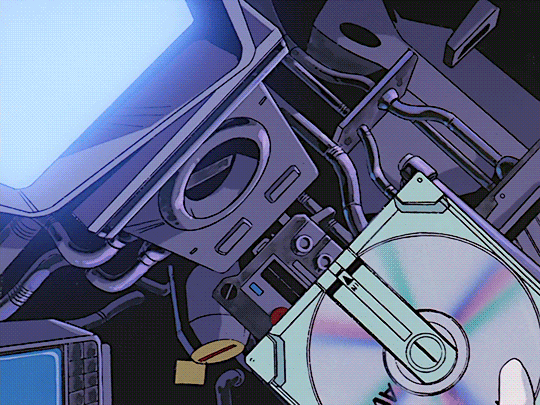
(Wanderer Not Mention Patlabor Speed Run [IMPOSSIBLE])
One of the issues with the term "real robots" is the fact that the realism in most "real robot" shows does not necessarily come from the robots themselves. Take blog favorite Patlabor, for example. Part of what makes the Labors as realistic as they are is not necessarily due to the imagined mechanics behind these machines. It's how the existence of these giant machines changes the lives of the characters. It's little things like how having a special police division that's devoted to Labor crimes is a bit of a money pit, or how SV2 has constant insurance problems due to the fact that Division 2, even in their best moments, are just as destructive as the people they're supposed to stop.
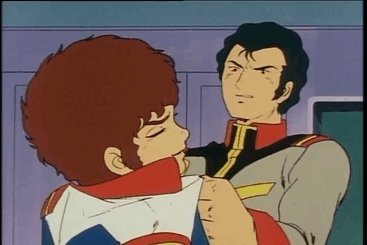
Or take the original "real robot" series, Mobile Suit Gundam. The realism does not lie in the design of the RX-78-2 Gundam. The realism comes from the One Year War and how it affects all of the characters. We can see this in how badly it affects the Gundam's pilot, Amuro Ray, as the poor sod of a teenager basically develops PTSD throughout the original show's run. And it's not just Amuro that's under a lot of stress. The infamous Bright Slap happens not only because Amuro refuses to get back into the Gundam, but because White Base captain Bright Noa (who's 19, by the way) is also at his wit's end. Never mind the fact that the slap makes everything worse.
So What Does This Have To Do With G Gundam?
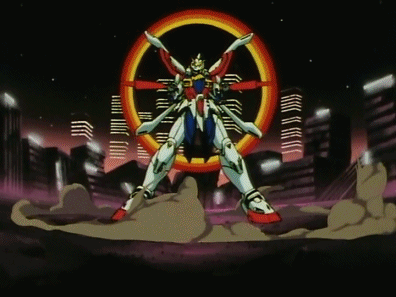
Everything. There's this idea that being a "real robot" series is what gives Gundam its bite and that G Gundam spits in the face of Gundam's original vision by being a hot-blooded "super robot" anime. There's just a couple of problems with that line of thinking. First, it's insulting to the series to say that it has nothing worthwhile to say. Y'know, G Gundam. The series that opens with the Gundam Fight (the Future Century replacement for traditional war) making its way to a ruined Rome, where the poor people who could not afford to leave for the space colonies are panicking as the Gundams literally crash onto their homes. The series where some of the last dialogue of the series is how, even after defeating the imminent threat that was the Devil Gundam, there is still work to be done when it comes to fixing the world, namely by finding a more sustainable replacement to the Gundam Fight. This doesn't even touch on the fact that all of the nations of the world join forces to face an threat that could wipe out all of mankind.

Second, and the part that I think is more insidious, is the idea that G Gundam is a lesser series because it went for more of a classic robot anime vibe as opposed to the serious war story that Gundam is known for. I say this is insidious because it not only ignores the fact that Gundam had just come off of the heels of the extremely depressing Victory Gundam and needed a bit of a palette cleanser, but it also implies that only so-called real robot stories can have serious storylines. God forbid something like Space Runaway Ideon exist, which is probably one of the most serious classic, pre-Dougram robot series out there, or Combat Mecha Xabungle, which is a really goofy but technically a "real robot" series.

This is also related to the idea that G Gundam is just "dumb fun." This line of thinking I can understand, because let's not kid ourselves here. While I wouldn't call this series dumb, G Gundam is kind of known for being insane (but in a good way). What makes this take just as grating is when a similar series can get away with a similar style of story just because it's not related to an existing franchise like Gundam. A series like, oh I don't know, Tengen Toppa Gurren Lagann. And that's a series that's often treated as somehow being different from most other mecha shows because "it's about the characters." Gurren Lagann is one of those shows, and people often treat it like it's a literary masterpiece while G Gundam, which I'd argue is one of the former's progenitor series alongside Getter Robo and GaoGaiGar, is treated as B-movie schlock. It's not, and I hope you'll join me when I dive into the insane masterpiece that is Mobile Fighter G Gundam.
#anime and manga#mobile fighter g gundam#tetsujin 28#mazinger z#mobile suit gundam#fang of the sun dougram#armored trooper votoms#patlabor#space runaway ideon#combat mecha xabungle#tengen toppa gurren lagann#real robot#super robot
26 notes
·
View notes
Text


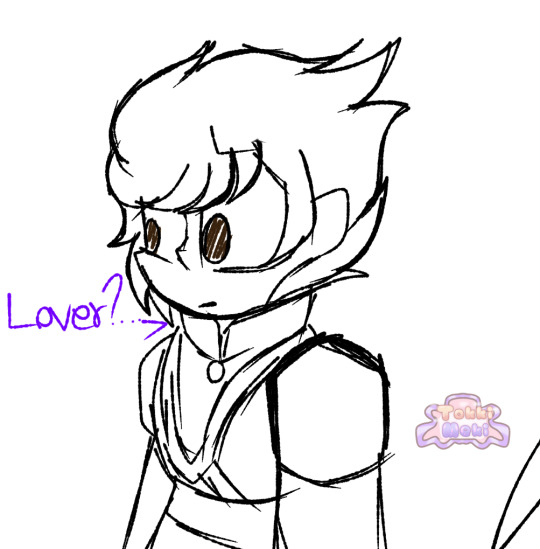
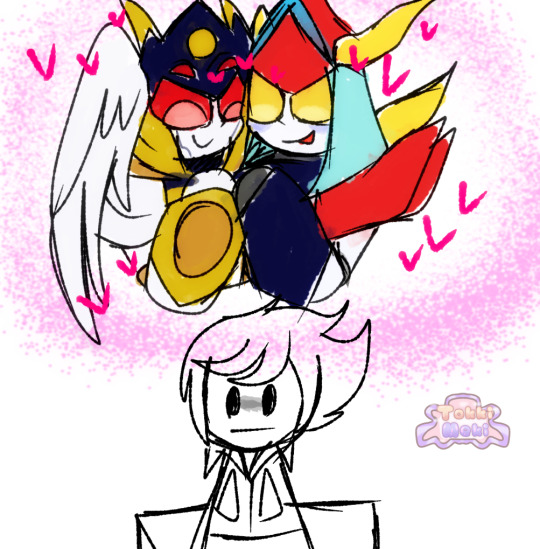

Lil Comic I made the last two days ago
.
.
.
Based on this screenshot from Srw MX:

Those who do not know what are they talking, they are talking about Rahxephon and Raudeen's reaction. One of them think they are not enemy but more than just friends (aka Rahx and Raideen are lover)
#yuusha raideen#yuusharaideen#Brave raideen#Akira Hibiki#Mazinger#mazinger z#Kouji Kabuto#Raideen#Rahxephon#the rahxephon#Raixephon#Raideen x Rahxephob#Comic#comic art#ibispaintx#my art#digital art#Art#illustration#artist on tumblr#mecha#Mecha love#Gay#super robor war#Super robot war mx#SRW
3 notes
·
View notes
Text
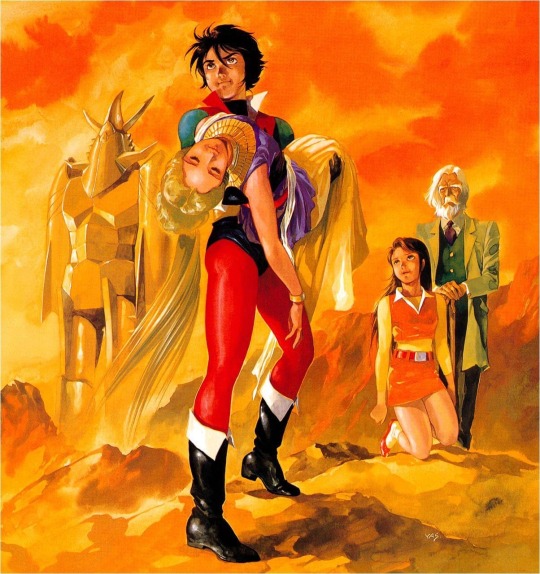
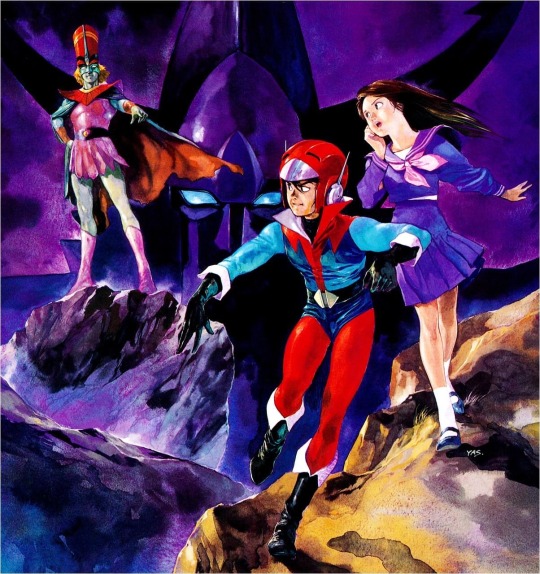
Brave Raideen art by Yoshikazu Yasuhiko
11 notes
·
View notes
Text



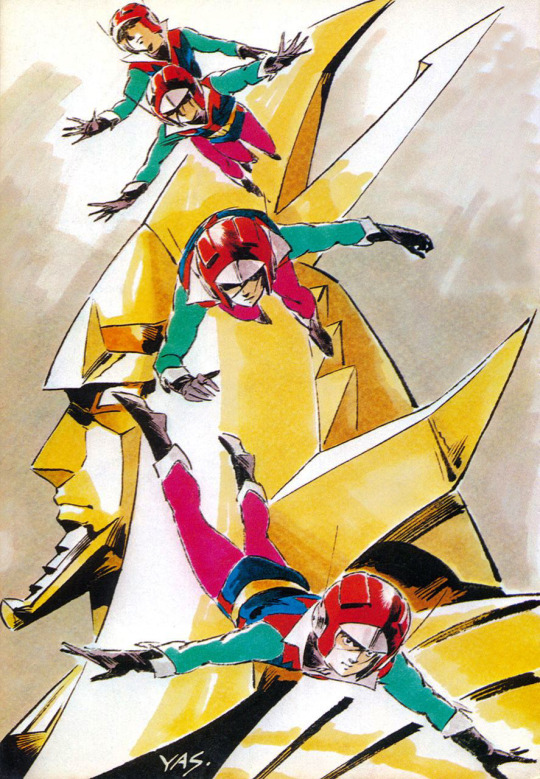




art by yasuhiko yoshikazu
#oh boy here we go#brave raideen#gundam#mobile suit zeta gundam#zeta gundam#mobile suit gundam f91#gundam f91#combattler v#yasuhiko yoshikazu
85 notes
·
View notes